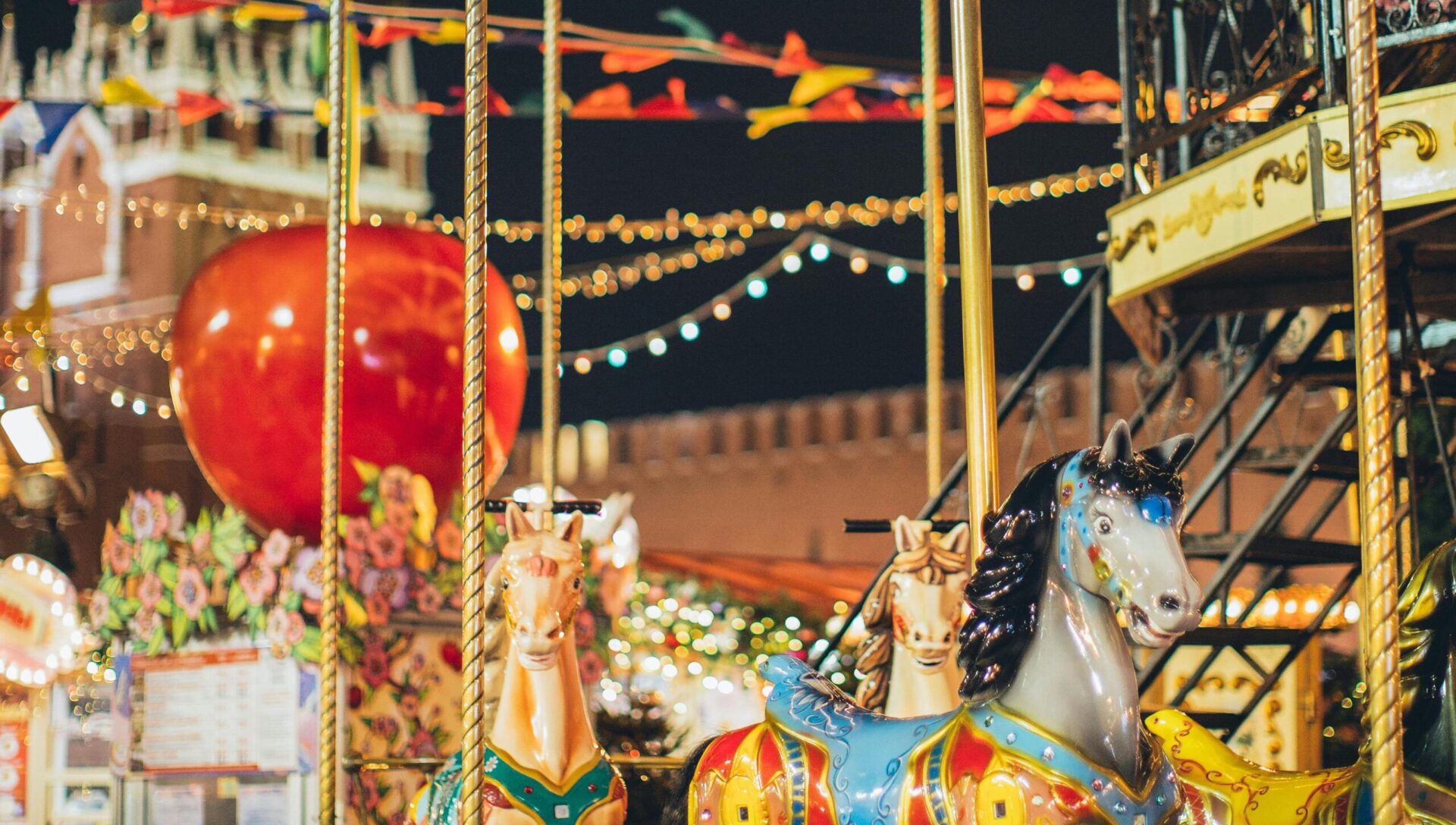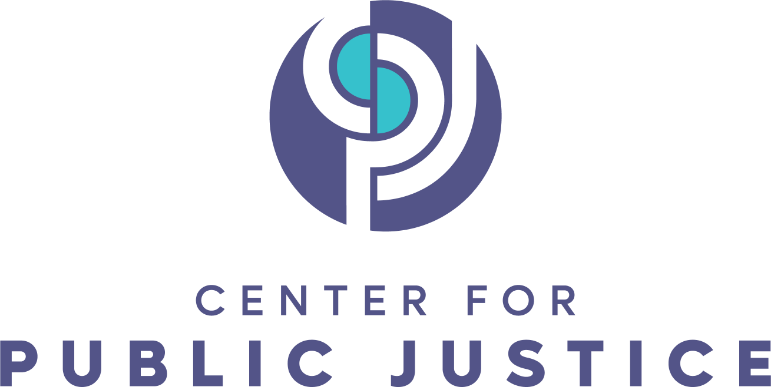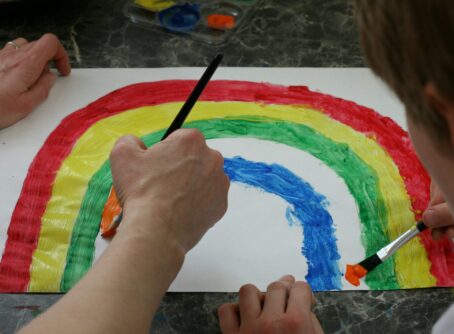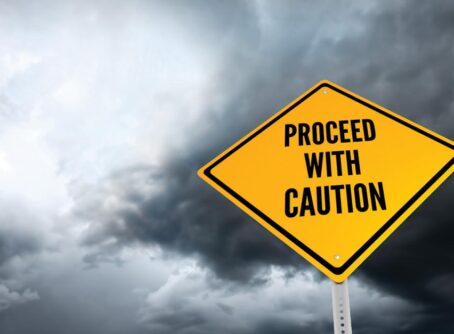
My just-turned-four-year-old has fallen in love with the classic folk tale “Henny Penny,” or as it’s more frequently called in the United States, “Chicken Little.” For days, I’ve been immersed in washing dishes, going on nature walks, and playing in pillow forts to the repeated, joyful chanting of: “Foxy Loxy, Goosey Loosey! The sky is falling! The sky is falling!”
Religious Freedom and Fairy Tale Archetypes
This classic tale, originally captured by the Grimm brothers, oddly brought to mind an article I co-authored with my colleague Stanley Carlson-Thies in response to the Supreme Court’s 2015 same-sex marriage ruling. The title, ironically, was “After the Court’s Marriage Ruling: The Sky Isn’t Falling. But FBOs Must Speak Up.” This title was a not-so-subtle callback to the widespread response we witnessed post-Obergefell by religiously conservative faith leaders and institutions, who claimed the world was ending. With respect to the religious freedom of faith-based organizations, this was an understandable overreaction. As we wrote at the time, Obergefell did not in fact, unto itself, limit the capacity of faith-based organizations to live out their religious identities and practices. As Justice Kennedy stated:
“The First Amendment ensures that religious organizations and persons are given proper protection as they seek to teach the principles that are so fulfilling and so central to their lives and faiths, and to their own deep aspirations to continue the family structure they have long revered.”
We did not make specific mention of Henny Penny in the article. “The sky is falling” captured a cultural consciousness that, I would humbly submit, did not slow down post-Obergefell. Fairy tales, even when the protagonists are non-human, capture something deeply true about what it means to be human, with slight variation, across cultures and time periods. While these folk and wonder tales have been associated with children’s literature hour and bedtime stories for the past century or more, they were once orally shared across generations, since the dawn of recorded history. In our contemporary moment, even with perhaps the decline in shared cultural literacy, phrases like ‘the sky is falling,’ ‘a Cinderella story,’ ‘follow the breadcrumbs,’ and ‘kissing a frog’ still reflect shared meaning, well beyond the nursery. This is true in religious freedom reporting in recent years.
The story of religious freedom in the U.S. is no less rife with big bad wolves, wicked witches, princesses, and enchanted forests than any other contemporary social or political issue. Of course, the characters and plot lines slated as villainous or virtuous change depending on the political or religious bent of the storyteller. But the fairy tale archetypes remain. In 2017, for example, the Chicago Tribune’s Steve Chapman, in an article about murky executive order following Trump’s pledge to extinguish the Johnson Amendment that got heat from both sides for its lack of clarity and substance, wrote: “Trump is no Goldilocks, and in this instance, he’s not even the Big Bad Wolf. He huffed and he puffed, but nothing came down.”
Hopeful Narratives: The Power of RFRA and Beyond
More recently, and more hopefully, Lori Windham recounted the tale of the Religious Freedom Restoration Act’s (RFRA) passage for an article to celebrate its 20th anniversary. She wrote of how Democrats and Republicans joined forces to pass the Religious Freedom Restoration Act, a significant bill advancing bipartisan common ground support for strengthening religious freedom. Despite initial skepticism, RFRA has proven to be a crucial safeguard for various religious groups, ranging from Apache feather dancers to Catholic religious sisters. While some feared that RFRA’s standard would lead to chaos, it has instead demonstrated the effective protection of religious liberty in practice. As Windham notes:
“This may sound like a fairy tale, but it has operated more like a science experiment. Since its enactment, RFRA has served as a bedrock protection for religious groups ranging from Apache feather dancers to Catholic religious sisters. Although some predicted that RFRA’s standard would be a recipe for anarchy, it has instead proven that religious liberty works remarkably well in practice.”
The Unfolding Story of Sacred Freedom in the United States
Recently, Becket released the fifth annual and latest edition of the Religious Freedom Index. The 2023 Index considers important and contemporary social and political challenges spanning the political, ideological, and theological/spiritual ethics spectrums. Taken together, the report shows an overall score of 69, the highest in the history of the Religious Freedom Index, demonstrating that even in the midst of increasing political polarization, religious pluralism, and mounting skepticism of institutions, the U.S. continues to be committed to spiritual and religious freedom for individuals and the communities in which they practice their sacred animating beliefs.
Our Disney-fied understanding of fairy tales shapes our public imagination toward seeking an uncomplicated, nuance-free happy ending. But this was not the reality of folk and wonder tales that existed orally and adapted fluidly to changing ecologies, social conditions, and religious norms for generations across all cultures and peoples. Grimm’s Fairy Tales, while imperfectly documented, undeniably capture suffering, moral challenge, and the capacity for an enchanted spiritual imagination at every stage of life: from small children lost in a forest, to impoverished parents who struggle to put food on the table, to kings and queens desperate for a child, to the crone often cast as the witch. When viewed through this lens, we encounter compelling, age-old stories with deep religious roots that intertwine across different cultures and eras. These tales reflect aspects of ourselves and our understanding of the divine, as argued by Tolkien and Lewis. Instead of merely being nursery pastimes or shallow entertainment, these narratives delve into our deepest longings and examine the boundaries of spiritual freedom. They also illuminate the moral responsibilities that come with this freedom, suggesting that our enchantment with these stories can guide us toward more thoughtful and responsible action.
As a mother of young children, I often find myself immersed in the world of fairy tales, nursery rhymes, and fables, alongside biblical parables and miraculous stories. These tales, whether from the Brothers Grimm, Hans Christian Andersen, Andrew Lang, or the Bible, captivate my imagination and offer profound lessons.
When I delve into the Becket Religious Freedom Index, I don’t just see statistics and debates. I see a narrative of America’s journey—a tale of our nation imperfectly yet progressively embracing the pursuit of the Sacred across diverse beliefs. This unfolding story mirrors a fairy tale, illustrating a multi-religious, multi-generational quest for resacralization in every aspect of American life.
Central to this narrative is the recognition that while our understanding of the Divine varies widely, there’s a growing acknowledgment that religious and spiritual freedom is a fundamental requirement. This freedom allows individuals and communities to live out their sacred beliefs, stories, and traditions, fostering a rich tapestry of diverse expressions of faith.
The Religious Freedom Index reflects the broad spectrum of human experience, showcasing stories of young people advocating for spiritual freedom in the workplace, parents seeking spiritually integrated education, and efforts to protect the ancestral wisdom within Indigenous sacred sites. It’s a narrative that spans traditions, generations, and geographies, highlighting the universal importance of preserving and honoring diverse spiritual beliefs and practices.
The 2020 Index reached its lowest point, but in a notable turnaround, 2023 marked the highest score ever recorded. During this time, trust in religion and individuals of faith as contributors to solving societal issues has grown. In past editions, the Index has focused on generational contrasts. The Index reveals that in 2023, 59% of Americans expressed the belief that religion is a component of the solution to the issues facing America, marking a 9-percentage-point increase from the previous year. Moreover, Gen Z is much more embracing than other generations of freedom in the workplace for individuals to express their religious beliefs, from wearing religious clothing to accommodating diverse religious needs and schedules. In response to a question about the Religious Freedom Restoration Act standard, which states that the federal government cannot burden religious freedom without 1) a compelling reason and 2) choosing the option least restrictive of religious freedom, a significant majority (88%) of Americans favored RFRA or an even stronger standard for religious freedom. Moreover, 67 percent of Republicans and 81 percent of Democrats strongly support or somewhat support protecting Native American sacred sites over mining minerals, demonstrating remarkable bipartisan unity for Indigenous religious freedom in the midst of stories about political polarization.
Fairy tales can offer profound insights into the human psyche, revealing the depths of our spiritual imagination and the complexities of our cultural values. They tap into universal themes and archetypes, echoing the timeless quest for meaning and truth. This resonance with the human condition extends beyond the realm of folklore and into the broader sphere of religious freedom, as seen in the findings of the Becket 2023 Religious Freedom Index.
The Index highlights Americans’ robust support for religious pluralism, a cornerstone of religious freedom. Despite varying beliefs and backgrounds, Americans across demographics and generations consistently uphold the freedom to seek truth according to one’s conscience, without government interference. The Religious Pluralism dimension, scoring 84 in both 2022 and 2023, underscores this unwavering commitment to protecting the diverse spectrum of individual and collective aspects of religious freedom.
Interestingly, the Index reveals that both religious and non-religious individuals strongly support religious pluralism. This solidarity extends to various aspects of religious freedom, such as tolerance for differing beliefs and the freedom to practice religion through counter-cultural norms. Personal relationships also influence attitudes, with those connected to people of faith exhibiting higher support for pluralism.
Among demographic groups, those who attend worship regularly and value religion tend to score higher on the Index, emphasizing the role of personal beliefs and practices in shaping attitudes toward religious freedom. Black Americans score higher, indicating unique perspectives within diverse communities.
The Becket 2023 Religious Freedom Index not only reflects Americans’ enduring support for religious pluralism but also underscores the intricate interplay between spiritual beliefs, moral values, and political ideologies. Just as fairy tales reveal profound truths about the human experience, the Index illuminates the multifaceted, yet sacred story of religious freedom in contemporary American society.
In the intertwining narratives of fairy tales and religious freedom, we find a reflection of our deepest human longings and societal aspirations. Just as folk tales have evolved over centuries, adapting to new cultures and contexts while retaining their core truths, so too has the concept of religious freedom in America. The Becket Religious Freedom Index serves as a barometer of this evolution, showing the still unfolding, sacred story of a nation grappling with its diverse beliefs yet increasingly committed to upholding spiritual and religious liberties. The stories told, whether in fairy tales or religious freedom reports, ultimately shape our understanding of ourselves and our world. They become the stories we embody. They remind us that, like the characters in these tales, we are part of a larger narrative—one that calls us to advance and inhabit the freedoms that allow us to live out our sacred beliefs, ensuring that our stories continue to enchant and inspire for generations to come.
Chelsea Langston Bombino is a believer in sacred communities, a wife, and a mother. She serves as a program officer with the Fetzer Institute and a fellow with the Center for Public Justice.




